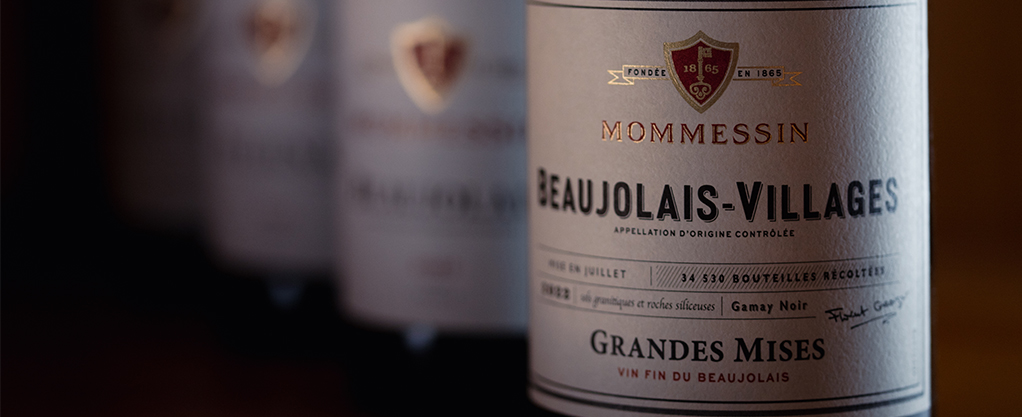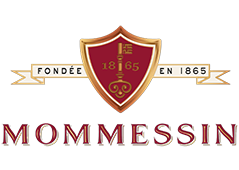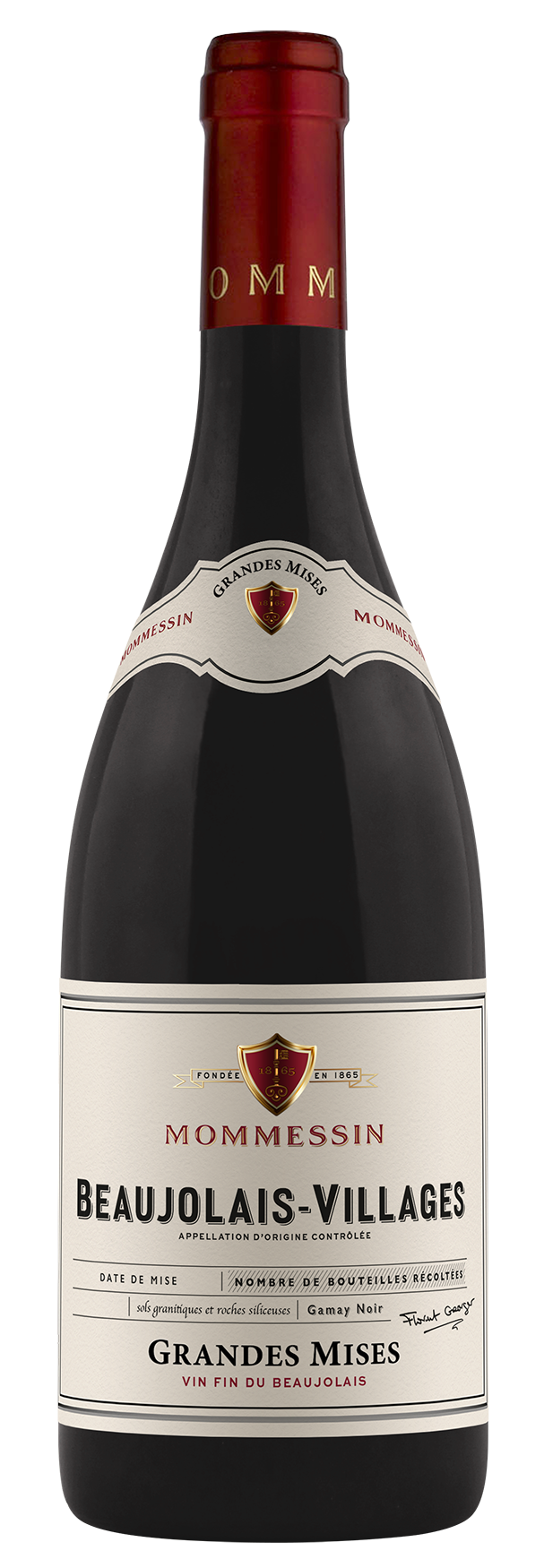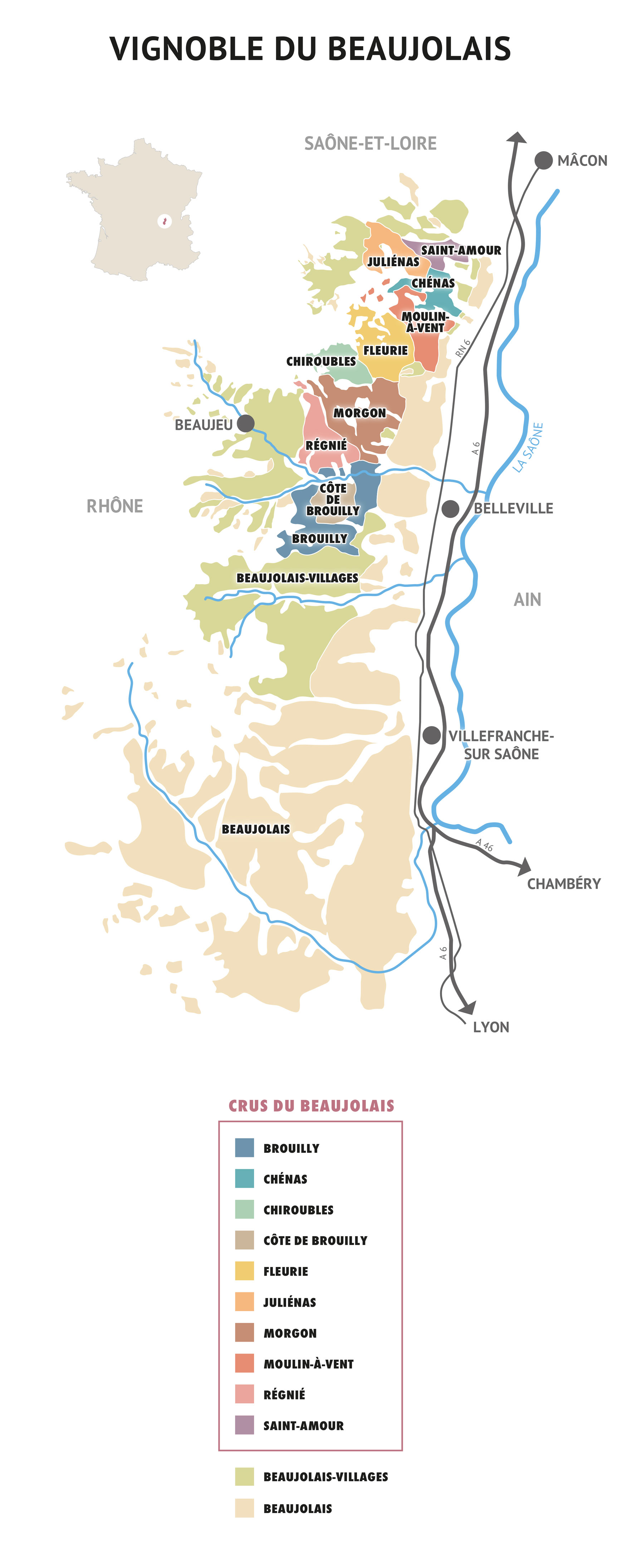
Grape varietal
Black Gamay with white juice.
Tasting notes
Ruby-red colour with violets hues.
The nose reveals flavours of black fruits and spices.
The mouth is dominated by ripe black fruits aromas, blackcurrant, blueberry and again spices notes. A well-structured wine, elegant and supple with silky tannins and very nice length.
Serving suggestions
Best served at a temperature of around 14°C to 16°C. (57-60°F.), to appreciate its fruit aromas, its delicacy and freshness. Try also to decant this great Beaujolais-Villages to discover new tastes!
Food and wine pairing
Ideal with charcuterie, Italian dishes and white meats.
Ageing potential
The long vat maceration allows for good extraction. This wine is therefore well-structured and can easily age up to 5 years.
Origins
The Beaujolais region forms part of the “Grande Bourgogne Viticole”. It starts South of the Mâconnnais. With 100% Gamay grapes, the Beaujolais Villages appellation is situated in the two departments of the Rhône and Saône-et-Loire, and especially around the villages of Blacé, Lancié, Régnié and Lantignié.
Terroir
The soils are mainly composed of limestone and clay interspersed with sandy granite veins. Of the total 22000 hectares planted in the Beaujolais region, 6000 hectares are entitled to the “Beaujolais- Villages” appellation, which is the intermediary appellation between “Beaujolais” and the 10 Crus.
Our wine is made up from a vineyard situated in: Blacé, situated towards the South of the region, several kilometres from Villefranche-sur-Saône. The vineyard extends from the Blaceret plateau (215 metres altitude) to the wooded hillsides of the Col de Failly (at 673 metres) and produces 420 hectares of Beaujolais-Villages.
Vine and soil
Age of Vines: 48 years
Yield: 56 hectolitres per hectare Plots:
A parcel selection with vines pruned “en gobelet” on sandy and stony soils.
Blacé brings roundness and fruit to the blend.
Vinification and maturing
Vatting occured with whole bunches to help and give a tasty, easydrinking style.
Semi-carbonic maceration lasted for 10 to 12 days with one over-pumping daily for maximum extraction and to preserve the aromas. After the pressing, the free run and press juices were blended together, the malolactic fermentation was 100% completed and the wine was aged in stainless steel tank on fine lees.
Vintage : 2022
Rainfall in June was highly variable from one area to another. In the south of Beaujolais, where most of the Chardonnays are concentrated, there was little rain, unlike the north, where the crus are located.
The intense heat of July and August accelerated the ripening process for the Gamay grapes. The harvest was characterised by great disparity between the plots. Some grapes did not withstand these extreme conditions and lost a lot of juice, while others resisted them exceptionally well. Several factors explain these divisions such as the heavily drained soil, the exposure, and the age and yield on the vine. There was little difference between the early and late sectors.
The harvest took place from 23 August to 10 September. Volumes were lower throughout the appellation, but the quality was good.
This year we have focused on de-stemming with long macerations to enhance the wine's elegance. Naturally, our traditional semi-carbonated vinification with whole grapes is still used to extract the aromatic finesse of the Gamay grapes, as well as some hot pre-fermentative maceration to extract as much colour as possible from the grapes that suffered the most from the drought.
The wines are beautifully concentrated with a lovely volume in the mouth. Tannins are prominent. Tasting is a real pleasure. The nose and palate reveal raspberry and cherry liqueur aromas, smooth blueberry cream accompanied by violets, dark chocolate and pear.
Awards
- May 2024 : Bronze Medal - INTERNATIONAL WINE CHALLENGE




